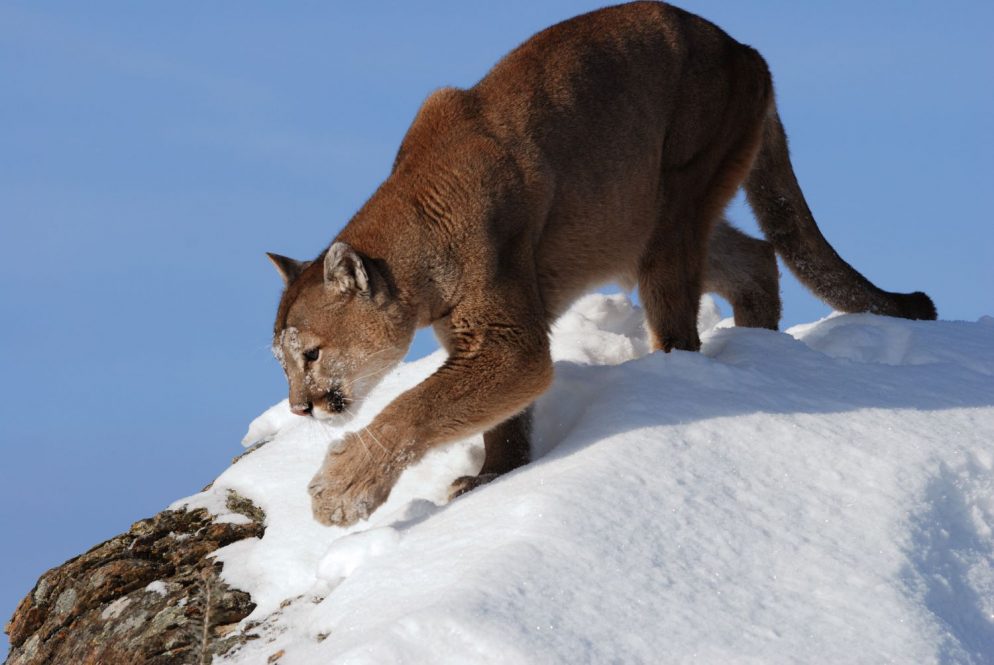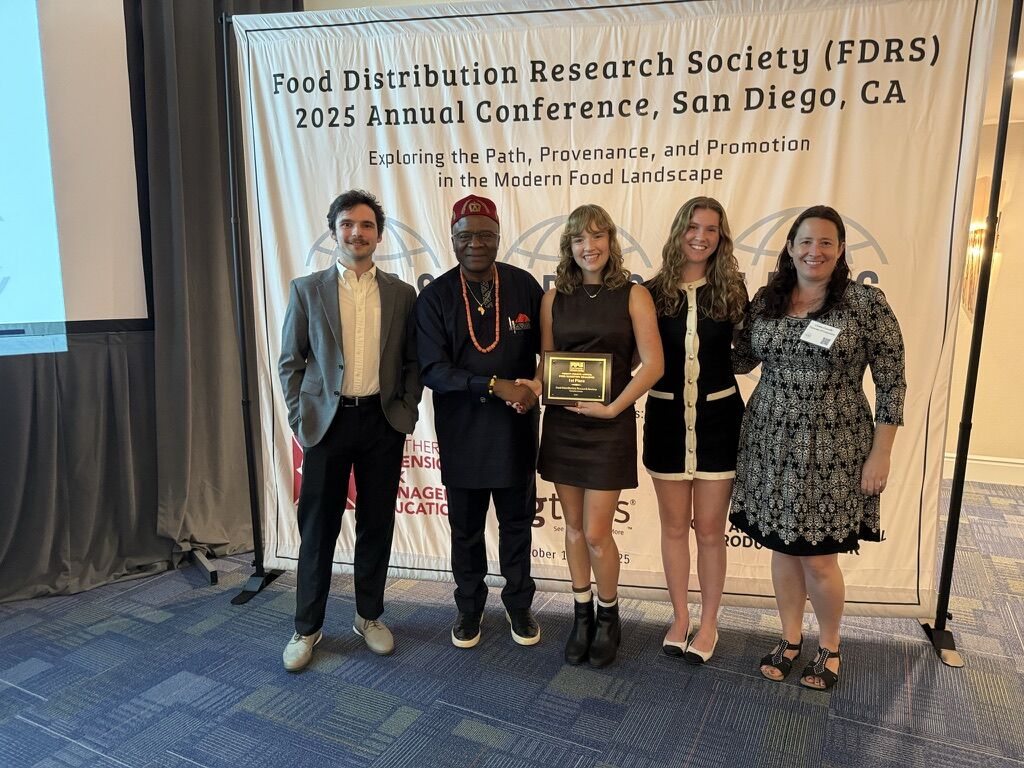If two hot air balloons right next to each other lift off at the same time, in identical weather conditions, moving straight up, they will still gradually move away from each other as they ascend, because the earth is round. This phenomenon gives rise to the seeming paradoxical situation that, as things go straight up, they also move apart.
Although this isn’t much of a problem for these hypothetical balloons, it is a major challenge for wildlife researchers.
Almost all existing models of animal movement only account for two-dimensional movement, which does not include when animals move up or down in space. This is a problem when studying animals like mountain lions or whales, that do this a lot.
Without these calculations, scientists misunderstand how animals spend their time and how much energy they expend during day-to-day activities.
A new paper in Ecology by Thomas Meyer, professor, and Tracy Rittenhouse, associate professor, in the Department of Natural Resources and the Environment (NRE), addresses this problem by providing researchers with two mathematical methods to model animal movement in three dimensions including both topography, such as mountains, but also accounting for Earth’s curvature.
The paper reports that, if an animal moves vertically substantially less than they move horizontally, existing models based on map projects are pretty accurate. However, if an animal moves vertically as much or more than they move horizontally, these calculations have significant errors.
“One of the most basic measures of what an animal does and how they live is how far do they migrate, how far do they travel,” Rittenhouse says. “We put numbers on that, and if that number is really wrong, it influences all kinds of things.”
Rittenhouse studies wildlife by attaching GPS units to animals, yet Meyer, who is an expert in geodesy, the science of measuring the size and shape of the Earth, led this research on animal movements. How does that happen? In short, they both use GPS technologies to study the environment.
The pair, who work in the same department, had an “Aha” moment when Meyer drew hot air balloons on a piece of scratch paper and asked Rittenhouse how she was accounting for this phenomenon.
“The short answer was ‘I’m not,’” says Rittenhouse.
Meyer started working on the calculations and invited colleagues from the Department of Statistics to contribute. Rittenhouse searched the scientific literature. They needed to select a wildlife species to focus the research. They started with mountain lions, which spend their days climbing and descending mountains, and then added humpback whales, which move up and down in the water to breathe and eat on their long migrations along the coast of Africa. Focusing on these species required conversations with species experts, further adding to its interdisciplinary nature.
Their new calculation methods take existing map projection data and convert it into longitude and latitude coordinates, which inherently capture the curvature of the earth. Digital elevation models allow researchers to determine what the height at a given coordinate is.
“Now that you’ve put the animal up on the surface of the earth, it’s more complicated than simply saying they were at this point over here at that height and at this point over there at this height and just subtract the two heights,” Meyer says. “That’s not good enough because of the curvature of the earth.”
The calculations get more complicated from here. In the paper, the researchers provide two different methods to account for the curvature of the earth to provide accurate measures of 3D animal motion.
“It both correctly accounts for the topography, and simultaneously captures the curvature of the earth,” Meyer says. “It solves the problem rigorously.”
The difference between the two methods is that one is easier to use, while the other provides additional information about things like slope distances, and the direction and angle of movement. This information can help researchers better understand what an animal is doing.
“I am extremely excited to see how other people studying animal movement use this research,” Rittenhouse says.
Follow UConn CAHNR on social media



